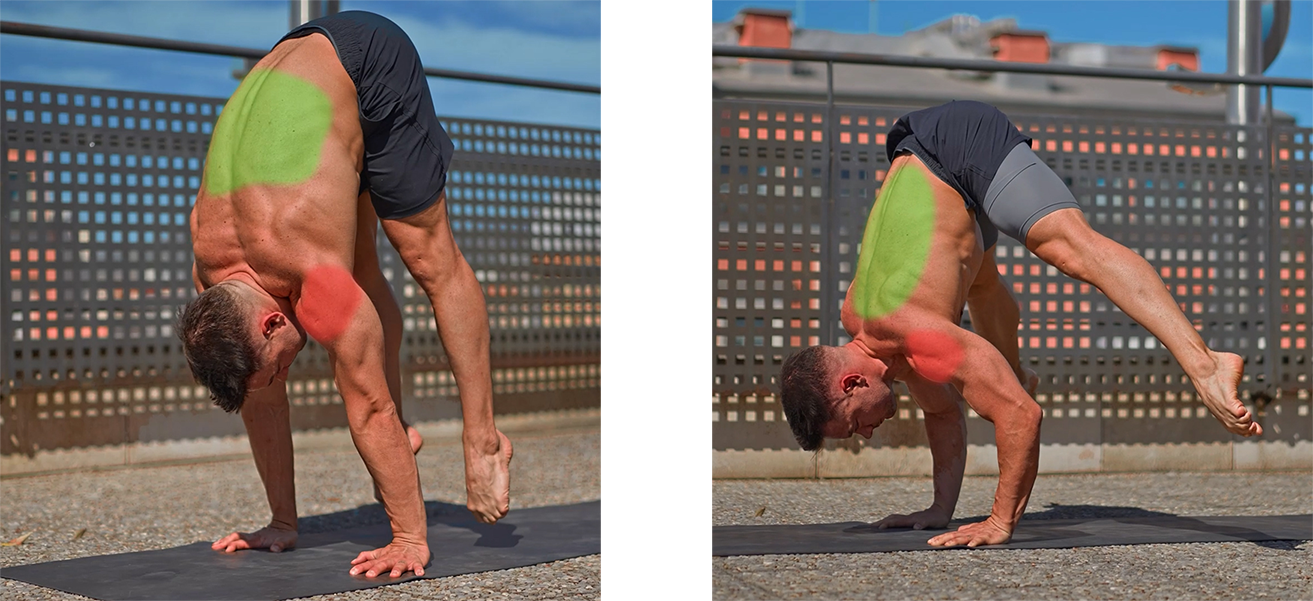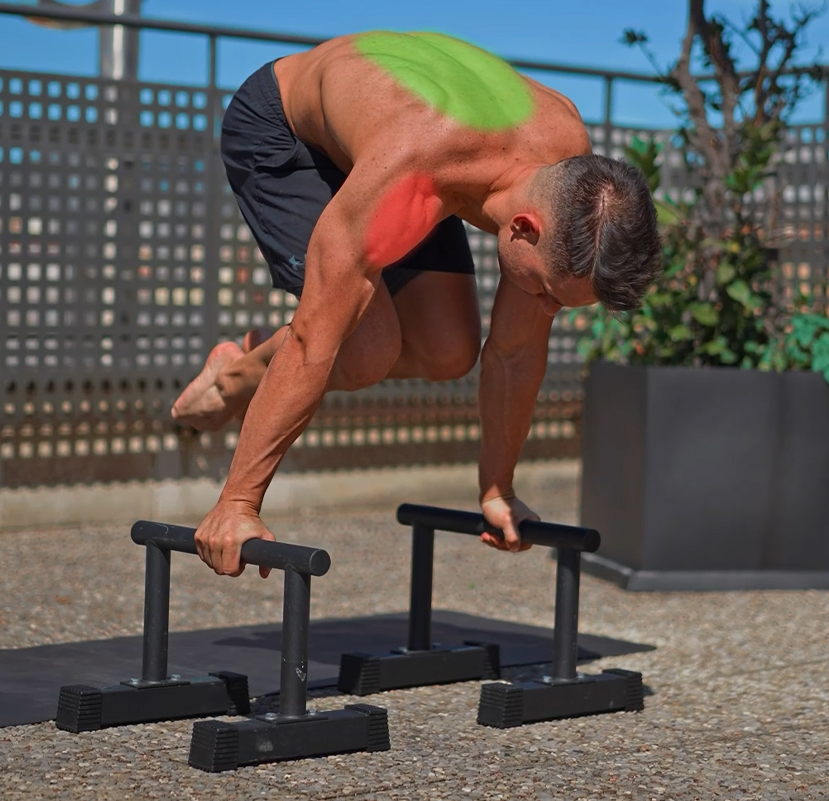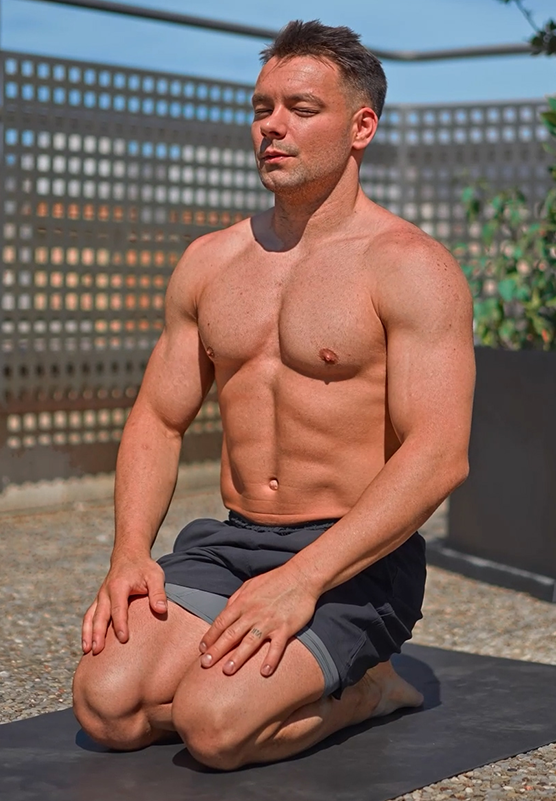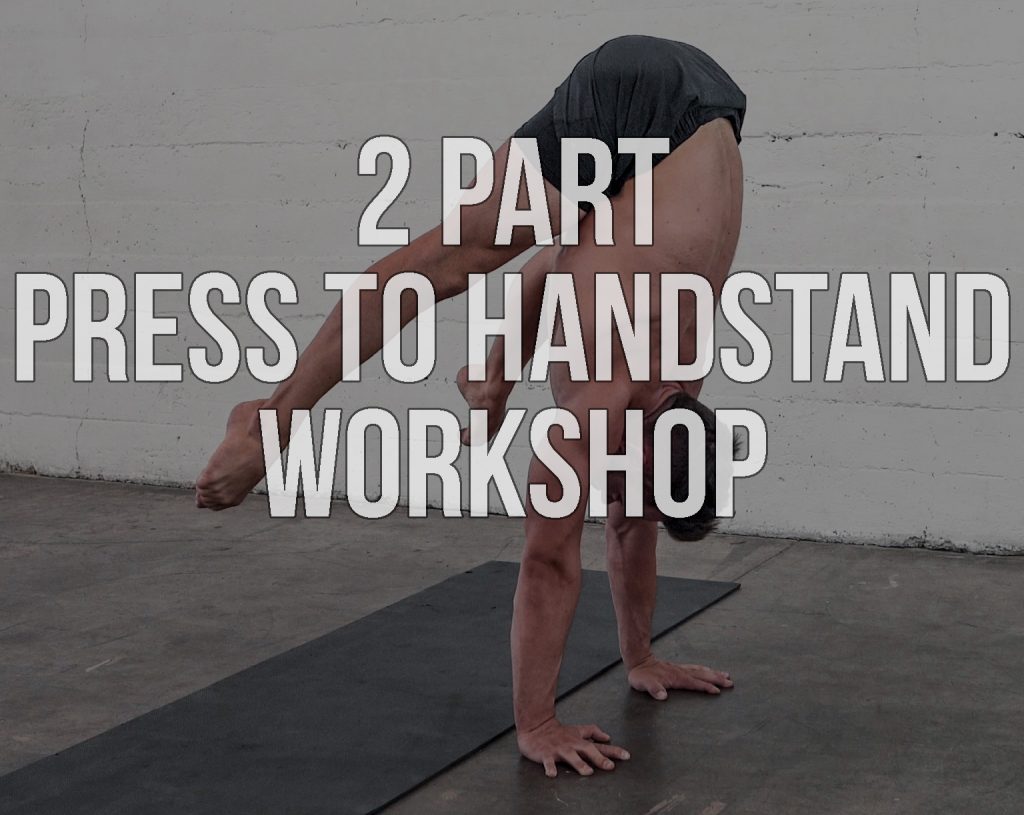Press to Handstand Free Gains
Looking at goals like the press to handstand might be a bit discouraging when we first start training. Such moves are overwhelming and complex and it becomes difficult to pin point actual weak spots. Feelings often unfold in the following manner:
- Find the skill you want to learn
- Try it and fail
- Learn about it and realize how much work you will have to put in
- Asking yourself if you are actually ready and if there is any reason to train said skill
We quickly realize that the journey will be not just long but uncertain. We start to question things. We ask the internet and a lack of good knowledge leaves us floating along in a dark cloud of desperation for guidance and reason. Basically we are looking for a simple path to take us from where we are now to the desired drill.
The more desirable the drill the more complex it becomes and the longer the journey usually is.
The further you are from achieving the drill the more your mindset towards it has to change.
We are always tempted to only see the finishing line. We are striving for the golden sparkle at the top of the hill aching to achieve the drill and for all of our dreams to come true. Rightfully so! Yet we need to stay realistic. You might not get there within the next 6-12month. This is normal. We all took a long and winding road. Learn to enjoy this road and along it you will find plenty of beautiful flowers and gold coins that get invested into your body, ability and ultimately practice on a daily basis.
No matter your current level you don’t need to be training the press in order to ever do a press. Instead work on the press for all the big bonuses that come along with it. You can plan your entire training week, month or even year around the press to handstand and so many aspects of all of your different disciplines will improve drastically.
Scapula strength to safe every handstand

This is one of the coolest things about learning the press to handstand. Long before you are actually able to press to handstand you can do partial press to handstands. This means lowering about half way down from the handstand and pushing right back up. Now if you are kind of able to do that you get close to the point where you basically can not fall anymore because you are able to catch every single handstand and push back up.
Try this by working regular walking deads or bench zombies. You feel your shoulder and back muscles. Those are exactly the same muscles that pull you back up in case you lose balance and your hips fall down!
Improve control and upside down coordination for freedom of movement
Now in the professional world of performing artists we like to call handstands hand balancing (fany isn’t it?!) but really it actually has very little to do with actual balancing. When you are standing on your feet waiting for the bus you also aren’t balancing. Instead you are controlling the way you stand with your toes planted securely into the floor. Handstands should eventually be exactly the same.
The more press and handstand push up conditioning you do the stronger your arms will get and the less your handstand needs to be balanced. Instead you will be in full control.
Control also means ease of mind and mental space for other things. Once you are not constantly fighting to survive in your handstand you will start to enjoy being upside down and you will be able to focus on things such as leg isolations and different shapes such as tucks and straddles.
Finally learn to tuck
This one might seem far fetched at first but hear me out! The leg movement of lowering from a handstand down through a straddle or even pike press is technically the same as when you lower into a tuck.
You are bringing the legs down in other words you are decreasing the angle at your hips whilst engaging the lower back to stabilize the hips or even slightly pull them into an anterior pelvic tilt. Working on the press to handstand will force you to develop the necessary coordination and strength for this precise movement. Especially for people who are more limited with mobility, nailing the tuck handstand can be a hard nut to crack but through consistent and focused press to Handstand training everyone will figure it out eventually.
Increased Hamstring Mobility to make any mount a piece of cake

I say it all the time. The press to handstand is a flexibility drill before it is a strength drill. Hamstring flexibility is especially going to make a big difference here and decide if your press is rough or clean, heavy or efficient.
Training your press religiously will therefore require you to stretch your hamstrings a lot. Convenient by-product is that daily things like tying your shoes or deadlifting the groceries from the bottom shelf in the grocery store just got significantly easier. On a more handstand related side kick ups to handstand for example will also become significantly more stable as you won’t have to float as far. This blind part where you jump past your limit of flexibility before gaining control again becomes smaller making your mount easier and ultimately consistent.
Shoulder strength for basic planche progressions
Anybody who trains with me and either works towards their first planche, stalder press or even 90 degree push up goes through the same basic progressions. Before the road divides for more specific work the foundation built for all of these drills is exactly the same. The goal for all of these is to invert and to get the hips on top of the hands. For that you have to use your anterior deltoid to increase the angle between your rib cage and the upper arm. Anybody working towards the press to handstand is automatically working towards the planche and vice versa. More abstract but also true: anybody working towards the press to handstand will improve their handstand push up strength at the same moment. While it is important to prioritize and focus on a minimum amount of goals at the same time, working towards the press and the Handstand Push Up in the same program makes a lot of sense.

Abs & Core strength for L Sits and the Beach
We know that compression is what makes your press efficient. If your feet hang out on 1 side the shoulders have to move out on the other side to balance your bodyweight. Pull the feet in to be able to keep the shoulders in as well, saving anterior deltoid power and protecting your wrists from injuries.
Being able to pull the feet in requires coordination and stability but especially core and hip flexor strength. The more the better! All of the compression work required for the press to handstand will make your core super strong which will look great at the beach this summer but will also transfer to any other discipline you might be practicing.
Develop body awareness and coordination

Lots is happening at the press and it all needs to happen at the same time. If 1 aspect of the press is not precise or lacking the entire structure crumbles and your press will become difficult and inefficient. Being able to do all of these things at the same time requires practice and coordination.
When you first start off training you won’t have this coordination. Only through focused training you will learn to engage your shoulders to stabilize the position whilst pulling your hips up through your back muscles. I can almost guarantee you that while working towards your press to handstand you will find muscles that you weren’t even aware existed!
Going through this process of finding new muscles will be super helpful in the future. I can promise you that! Say for example the mana. Anybody who tries a mana for the first time has no idea where and what to engage. Whilst the mana uses different muscles in different directions, having gone through the process of finding new muscles whilst learning the press to handstand will give you understanding and perspective when learning the mana or really any other new skill.
Mind muscle connection through visualization
This one is big as well. Visualization is such a powerful tool when learning any new acrobatic skills. Just like any other skill it needs to be practiced. I would almost compare it to meditation. The better you get at it the more realistic your visualization becomes. You will be able to place yourself into the situation of actually doing the drill. The ability to be truly living and performing the drill without even getting up does not come easy.
Learning to press to handstand in your imagination with all technical detail is enormous work that takes years to perfect. Yet, every little step towards this mastery of mind will help you visualize other drills or challenges in life.

So as you can see, even if you are not really interested in ever making it up during your press to handstand or if you think you are still light years away I strongly suggest you start training for your press to handstand as soon as possible.
If you don’t do it for the popular goal then do it for your scapula, compression and leg strength. Do it for your mind-muscle connection, your overall coordination and of course your flexibility.
Get to work!

